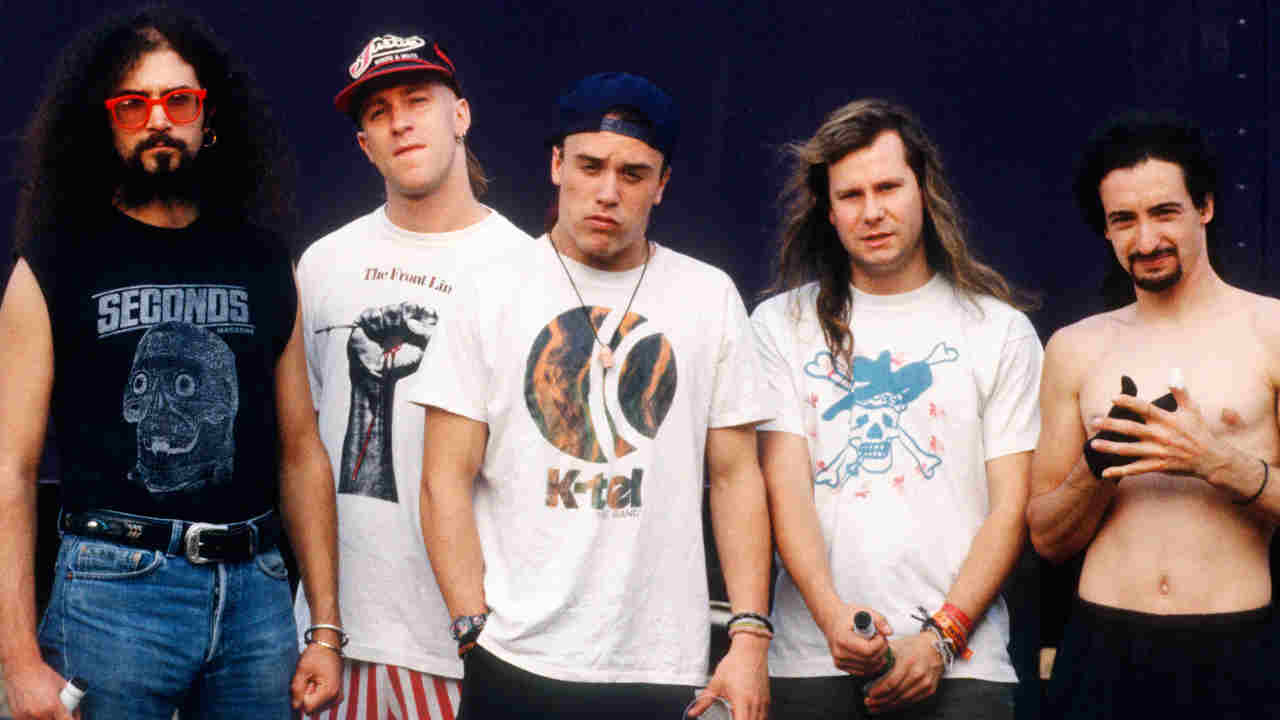An illustrated history of the pentagram in heavy metal
How the five-pointed star became the emblem of a music scene
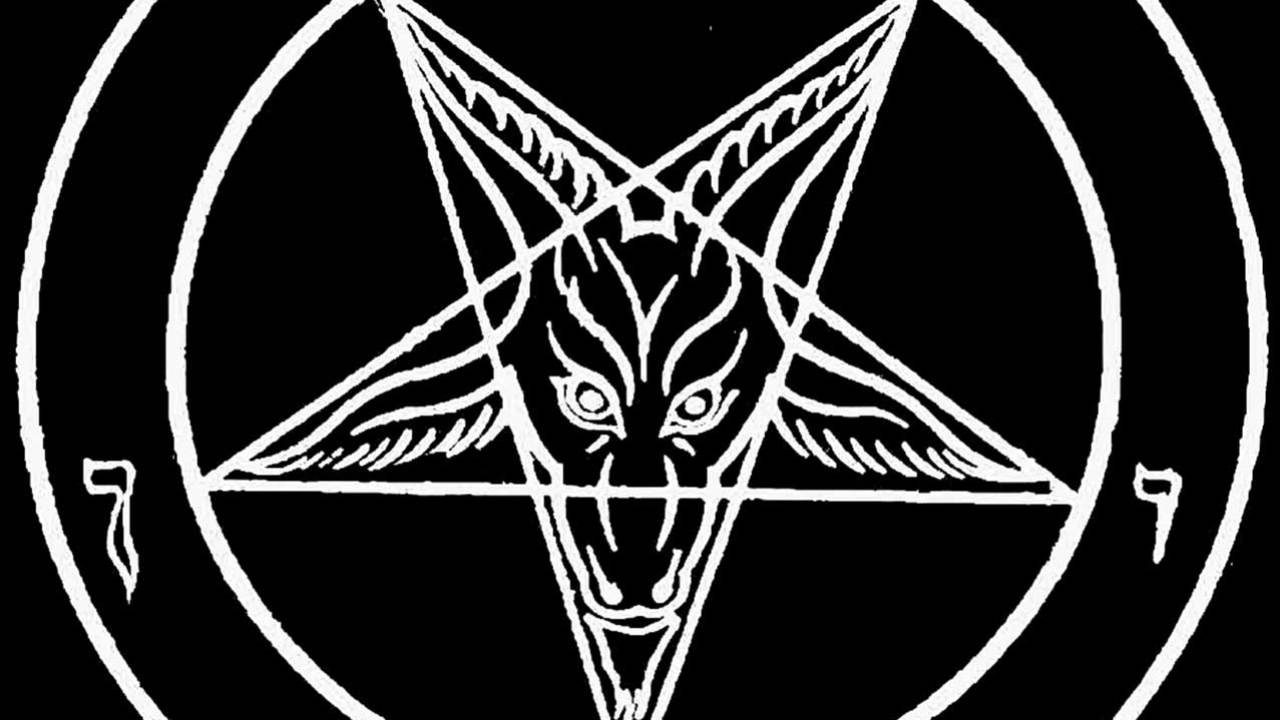
It’s an ancient symbol with its roots in multiple spiritual, ceremonial and philosophical traditions. Today it is primarily associated with Satanism, darkness, the occult and, for many, the world of heavy metal, having been used by bands repeatedly over the last three decades or so, perhaps more often than any other visual image. As you probably guessed, we are referring to the pentagram, that relatively simple but hugely iconic five-pointed star used by groups ranging from Venom to Slayer to Mötley Crüe to Emperor and even Anthrax – not to mention the five metal bands (how apt) that actually go by the name Pentagram.
So where did this symbol come from and why is it so associated with metal? Well, despite its sinister connotations today, the pentagram was certainly not originally viewed as a sign of evil. In fact it was used by a number of ancient civilisations, most obviously Greece, which is where the name ‘pentagram’ actually comes from, ‘penta’ meaning ‘five’ and ‘gram’ meaning ‘something written or drawn’. Indeed, it was none other than the famous mathematician Pythagoras who favoured the symbol, using it to depict the five elements and to link these with the five pointed division of the human body, thus connecting the head and four limbs with fire, water, air, earth, and psyche. The symbol would later be used by Kabbalists and during the times of the Hebrew scriptures as one of the secret names for god. Indeed, even some early Christians adopted the symbol to represent the five wounds of Christ.
In more recent eras of course, Christianity has distanced itself from the symbol, making it for many a relic of the Pagan past. Naturally there are many using it today, not only within Pagan and Wicca circles, but those interested in Satanism and the occult. Though the distinction is by no means set in stone, upward-pointing pentagrams have often been used by those wishing to point to god/gods, with the downward-pointing pentagram being used by those with darker intentions – no surprise then, that metal has traditionally gravitated toward the inverted pentagram. But how did pentagrams make their way into contemporary consciousness and integrate so closely into metal culture that they are used in conjunction with bands that aren’t Satanic in the slightest? We delved into the depths of history to create this helpful timeline…
1854-6: French occult writer Eliphas Levi publishes Dogme et Rituel de la haute magi
Eliphas Levi was a French occultist and ceremonial magician of great influence. Over two books (that were later collected and also translated into English as Transcendental Magic, its Doctrine and Ritual) he introduced many now-familiar elements to occult culture, including a drawing of the Baphomet (a winged, breasted, goat-headed figure with an upward pentagram in its forehead) still used by many today.
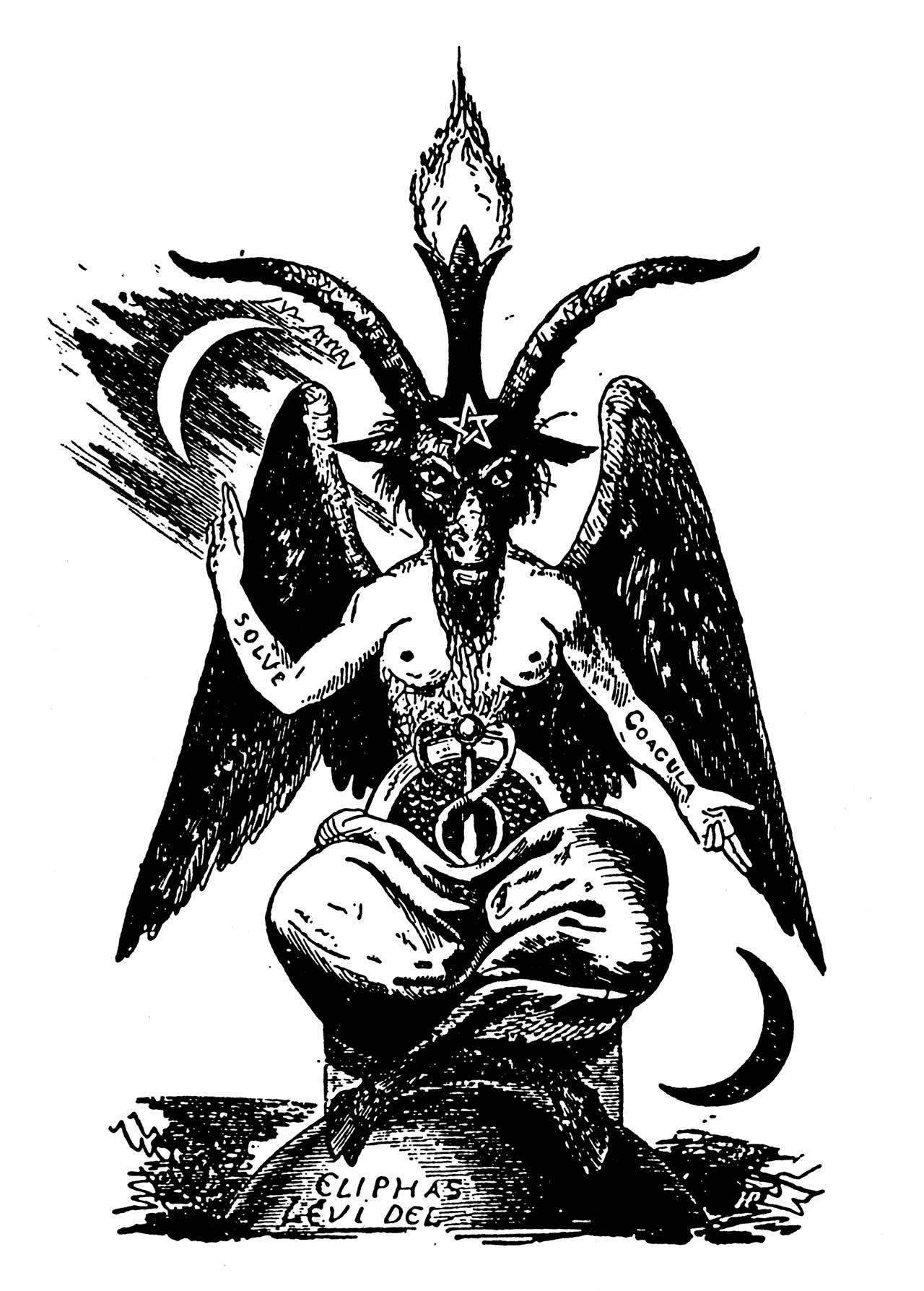
1897: French occultist Stanislas de Guaita introduces the Sabbatic Goat
In his book La Clef de la Magie Noire, a second French occult writer called Stanislas de Guaita introduced the inverted goat pentagram, often referred to as the ‘Sabbatic Goat’. The image includes the words ‘Samael’ (a devil figure in Rabbinic Judaic lore) and ‘Lilith’ (a female demon from Jewish mythology) as well as Hebrew letters spelling out Leviathan, another monster of Jewish mythology.
1961⁄1964: Maurice Bessy publishes A Pictorial History of Magic and the Supernatural (in French then English)
In 1961 a third Frenchman, Maurice Bessy, used a refined version of the Sabbatic Goat on the cover of his famous book on the supernatural, notably removing the words ‘Lilith’ and ‘Samael’.
Sign up below to get the latest from Metal Hammer, plus exclusive special offers, direct to your inbox!
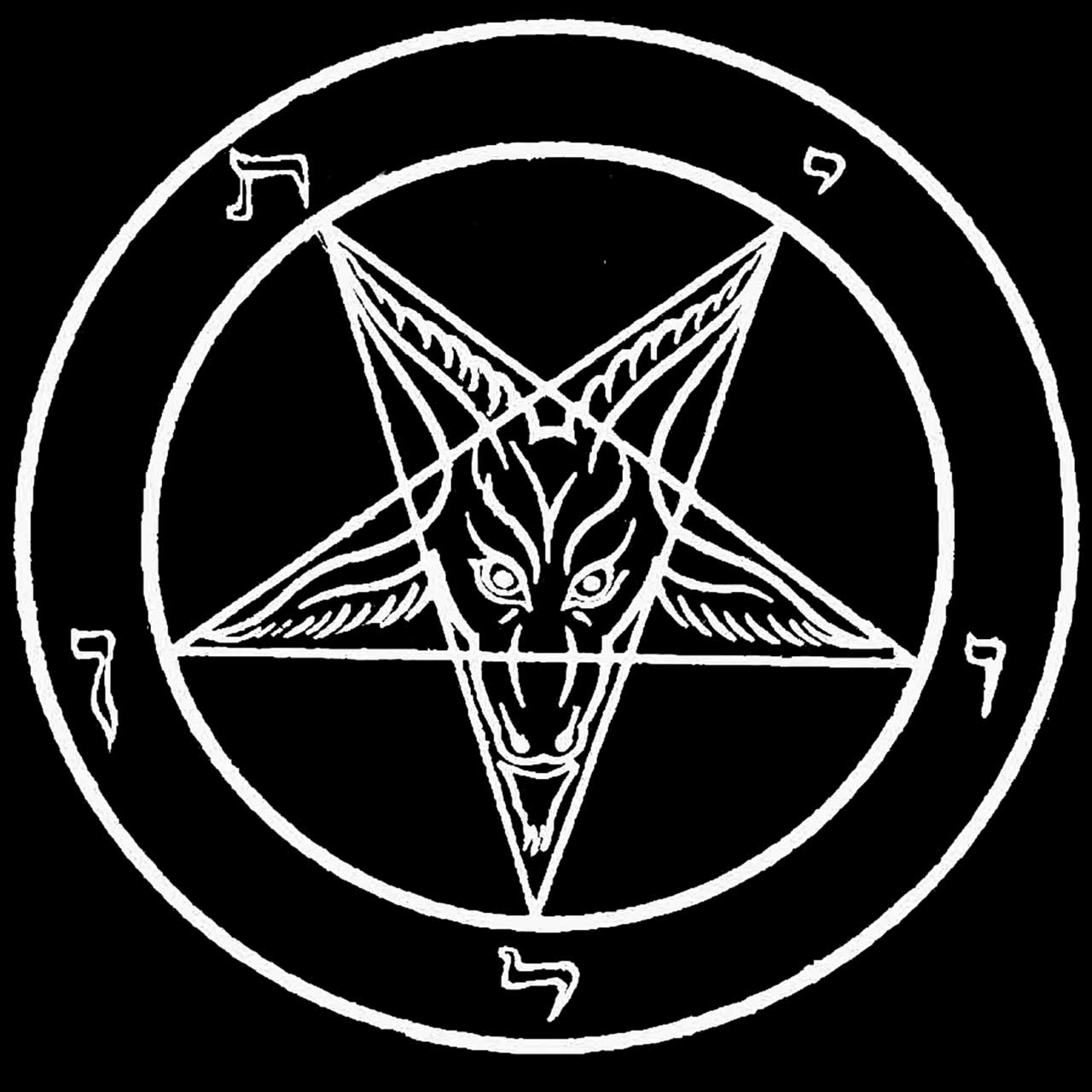
1968: Anton Lavey releases The Satanic Mass
Refining Bessy’s image still further, Anton Lavey, head of the Church Of Satan, creates what is now referred to as the ‘Sigil of Baphomet’ and uses it as a cover image for his LP, The Satanic Mass, which includes parts of the then-unreleased book The Satanic Bible.
1971⁄1973: Pentagram (US) form/release first recordings under that name
In 1971 doom legends Pentagram form with vocalist Bobby Liebling at the helm. The name is a logical one since the group are fascinated by subjects surrounding God and the devil. Curiously the group actually change name to Macabre for their first single in 1972, but soon change back and released a demo and single under the name in 1973.
1981: Venom release In League With Satan and Welcome To Hell
Arguably the starting point for both extreme metal and Satanic metal as we know it today, both Venom’s debut single and album feature singer Cronos’ own take on the Sigil of Baphomet/Sabbatic Goat and thus kicks off the use of baphomet and inverted pentagrams in metal music.
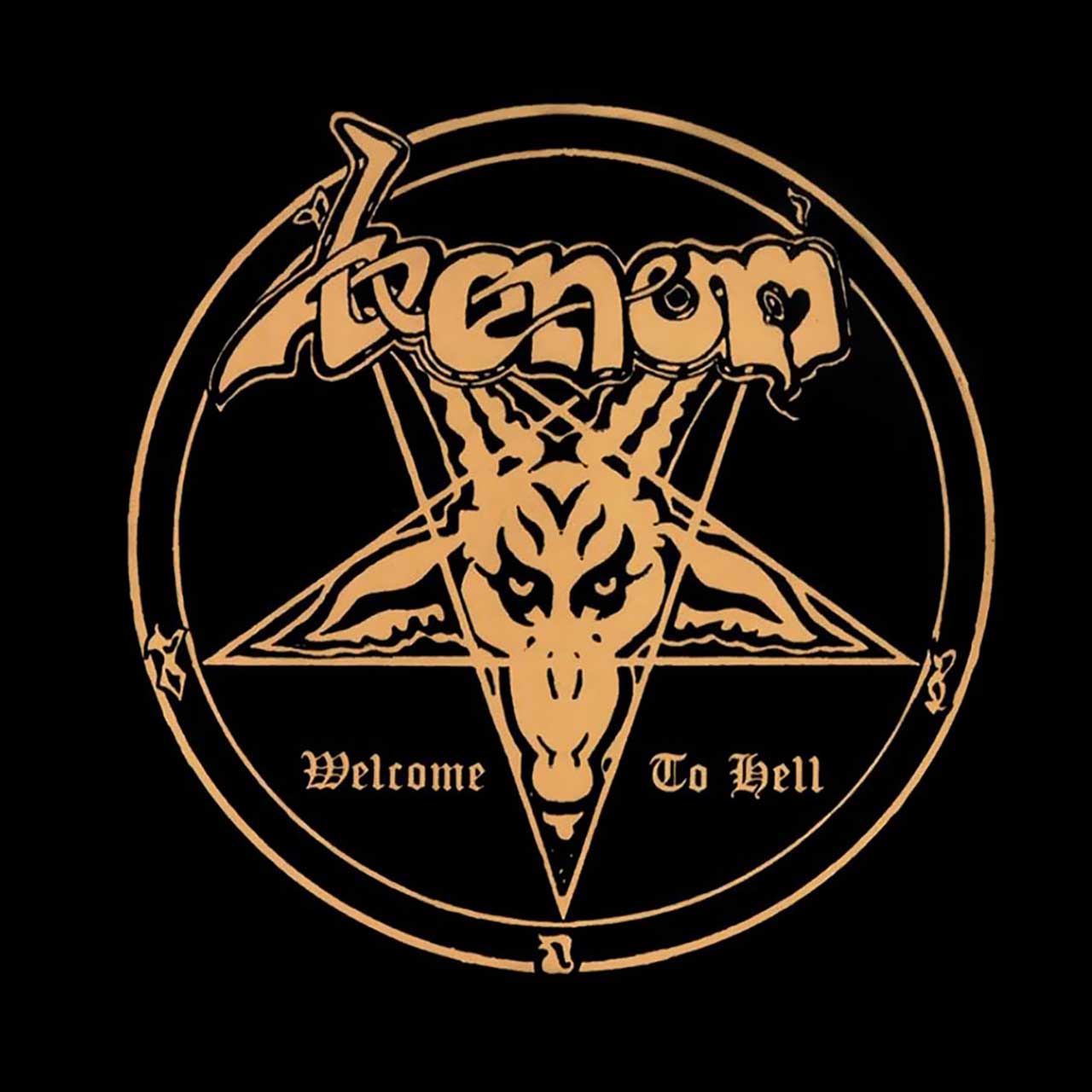
1983: Slayer release Show No Mercy
Huge Venom fans, Slayer were one of the next pioneers in sinister extreme metal and pushed their obsessions with darkness and evil even further. Their debut album features a memorable image of the band logo, set over a pentagram comprised of swords, with a goat-headed character brandishing the fifth blade. It has become an established part of the Slayer logo, although technically it is an incomplete pentagram since it features only four swords.

1984: Bathory release self-titled debut album
Another pioneer of extreme metal and Satanic themes, Swedish legends Bathory featured a large pentagram on the reverse of their first album. Interestingly, though the pentagram doesn’t feature a goat head, the front cover features a goat head minus a pentagram, which in turn has become one of the most iconic images in black metal.
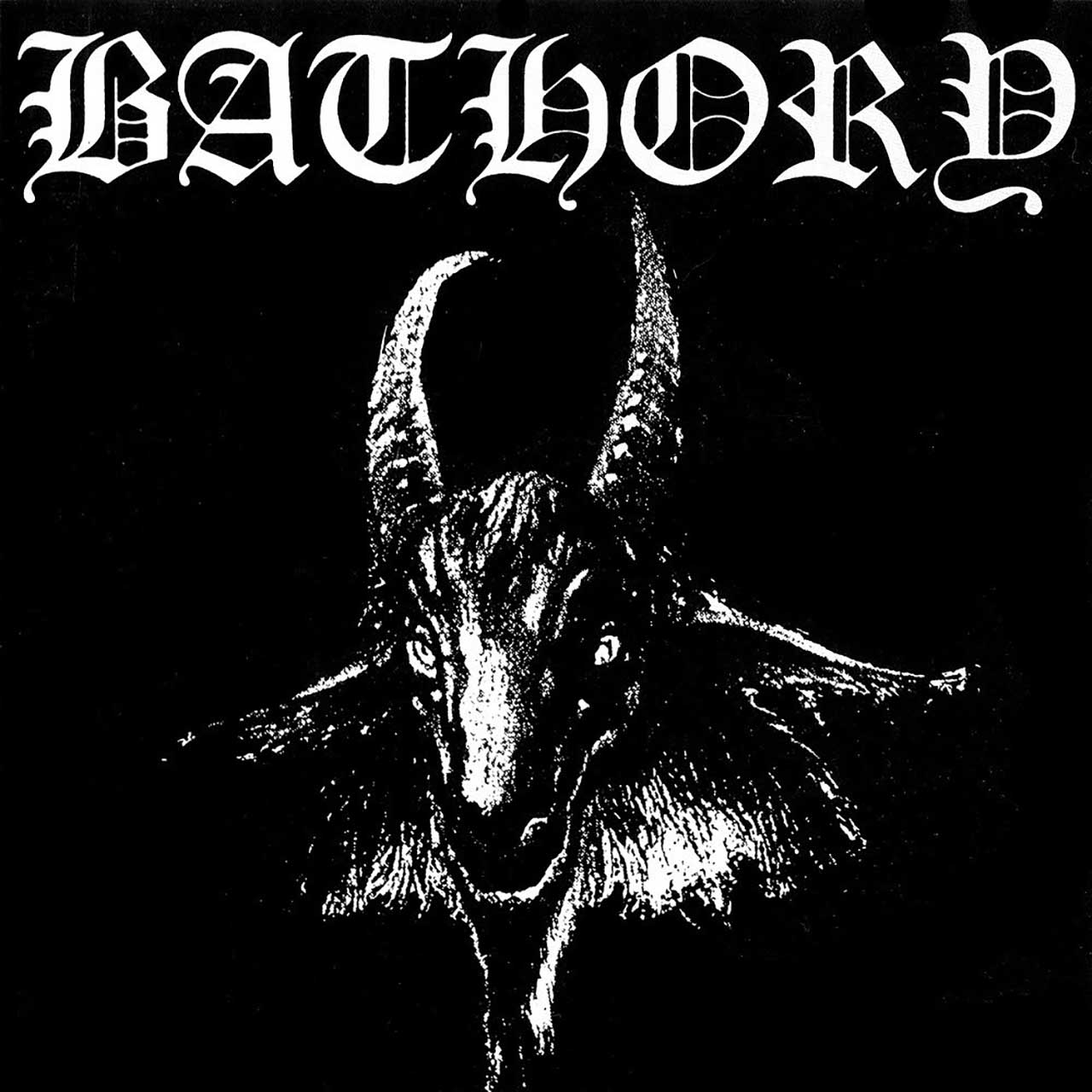
1984: Mötley Crüe release Shout At The Devil
Arriving in the midst of the ‘Satanic Panic’ gripping America, this glam metal opus caused considerable controversy thanks to its devilish title and its original cover, which featured a simple black-on-black pentagram.
1985: Onslaught release Power From Hell
British outfit Onslaught started life as a hardcore punk band but their album Power From Hell exhibited a dramatic shift toward dark thrash metal and sports a classic cover image, depicting an armed demon rising from a pentagram.

1985⁄1986: Pentagram (Chile) form/release first demo
With the pentagram becoming so associated with dark metal it was probably inevitable that more than one band would use the actual name ‘pentagram’. Though less-known than the US doom band, Chile’s Pentagram have become a respected death/thrash outfit in their own right and renamed themselves in 2012 to the rather more prosaic ‘Pentagram Chile’.
1986: The Swedish Pentagram form
Room for one more? Sweden’s Pentagram played thrash/death metal but after a couple of demo cassettes changed their name to Tribulation and found some success with a more thrash sound. Note: this not the same Swedish Tribulation that is around today.
1986: Morbid Angel form, include a pentagram in their logo
Death metal pioneers Morbid Angel integrated a pentagram into their logo from the start, a trait that would be repeated by countless bands over the years. In their case, the pentagram has actually been adorned with an inverted cross and some other flourishes that give a nod to the symbol for H.P. Lovecraft’s Necronomicon book.

1987⁄1990: The Turkish Pentagram form / release their first album
Three Pentagrams enough? No way. In 1987, Turkey offered another band with this name, one that even used a pentagram in the ‘P’ of their logo to hammer the point home. Blending thrash and heavy metal with local folk ingredients, the band have become quite legendary over the years and boast a sizeable fanbase. In later years the group have sometimes been marketed as Mezarkabul outside of Turkey to save confusion (which, in itself, can be quite confusing).
1989: Mexican Pentagram form
Just before the end of the eighties, one more Pentagram joined the fray, this time a Mexican thrash outfit who released a demo the same year entitled Disappear In The Obscurity the same year. They soon did just that, though have apparently returned recently.
1989: Treblinka release In The Sign Of The Pentagram with new logo
Controversial black/death metallers Treblinka are perhaps most famous for becoming Tiamat, but they were also one of the first bands to integrate a large pentagram into their logo, a trait that continued in the early years of Tiamat. Aptly they debuted the design on the In The Sign Of The Pentagram demo.
1989: Darkthrone release Cromlech demo, debut new logo
It was on the Cromlech tape that Darkthrone introduced the logo with which they are today associated. This iconic design features a downward pentagram at its peak and was created by none other than Tomas Lindberg of At The Gates.
1990: Deicide release their self-titled album, featuring ‘trifixion’ symbol
One of the most overtly Satanic bands, Florida death metallers Deicide decorated the inner sleeve of their first album with a design of their own making, the ‘trifixion’ symbol; essentially three inverted crosses with two pentagrams. A three-dimensional version of this would adorn the cover of the second album, 1992’s Legion.
1990: Beherit release the Dawn of Satan’s Millennium EP
Finnish black metal pioneers Beherit offered one of the greatest goat head/pentagram designs courtesy of the Dawn Of Satan’s Millennium EP and artist Christophe Moyen. To a degree the emblem has become a victim of its own creative success and is often mistaken for an ancient occult symbol. As such has been frequently used without permission by bands, labels and even cabaret shows!
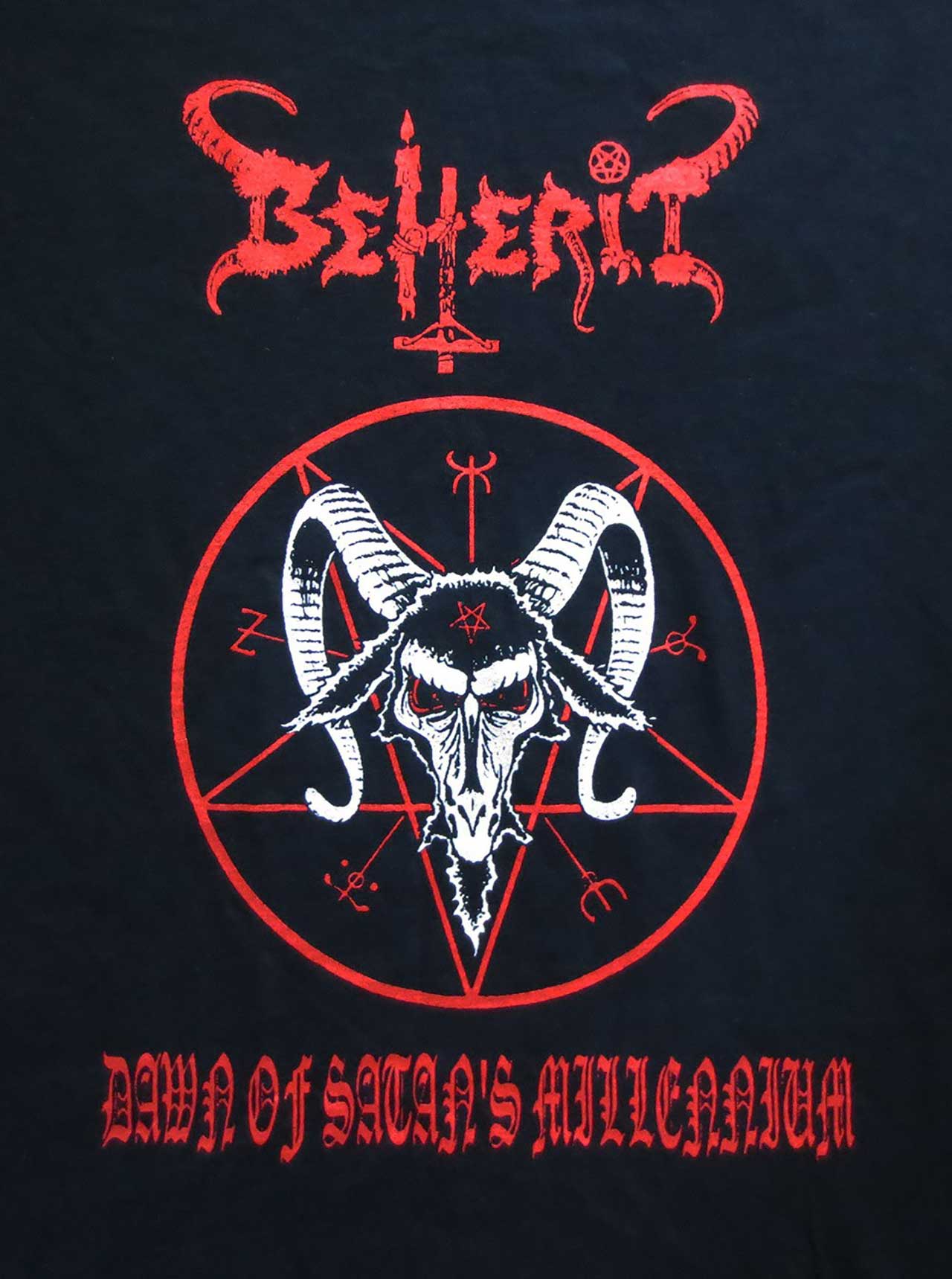
1991-1996: Necrophobic go for broke with pentagram use
Swedish black/death metal alchemists really liked pentagrams in their early years, filling the covers of their releases with various versions of the symbol, some in old school arcane black and white, goat-headed versions, others in a more refined, airbrushed Deicide-style.

1993: Summoning form/release first demo
Tolkien-worshipping Austrian black metallers Summoning formed in 1993 and released their first cassette in the same year. One of the most pentagram-centric logos in metal to date, it features each letter carefully arranged around the central star.
1993⁄1994: Dark Funeral form
There are now countless bands using pentagrams in their logos, but Swedish black metal veterans Dark Funeral are worth a mention for being one of the first and best known. Not only that, but theirs is one of the biggest in the game and combined with two inverted crosses and a goat head to maximise the effect.
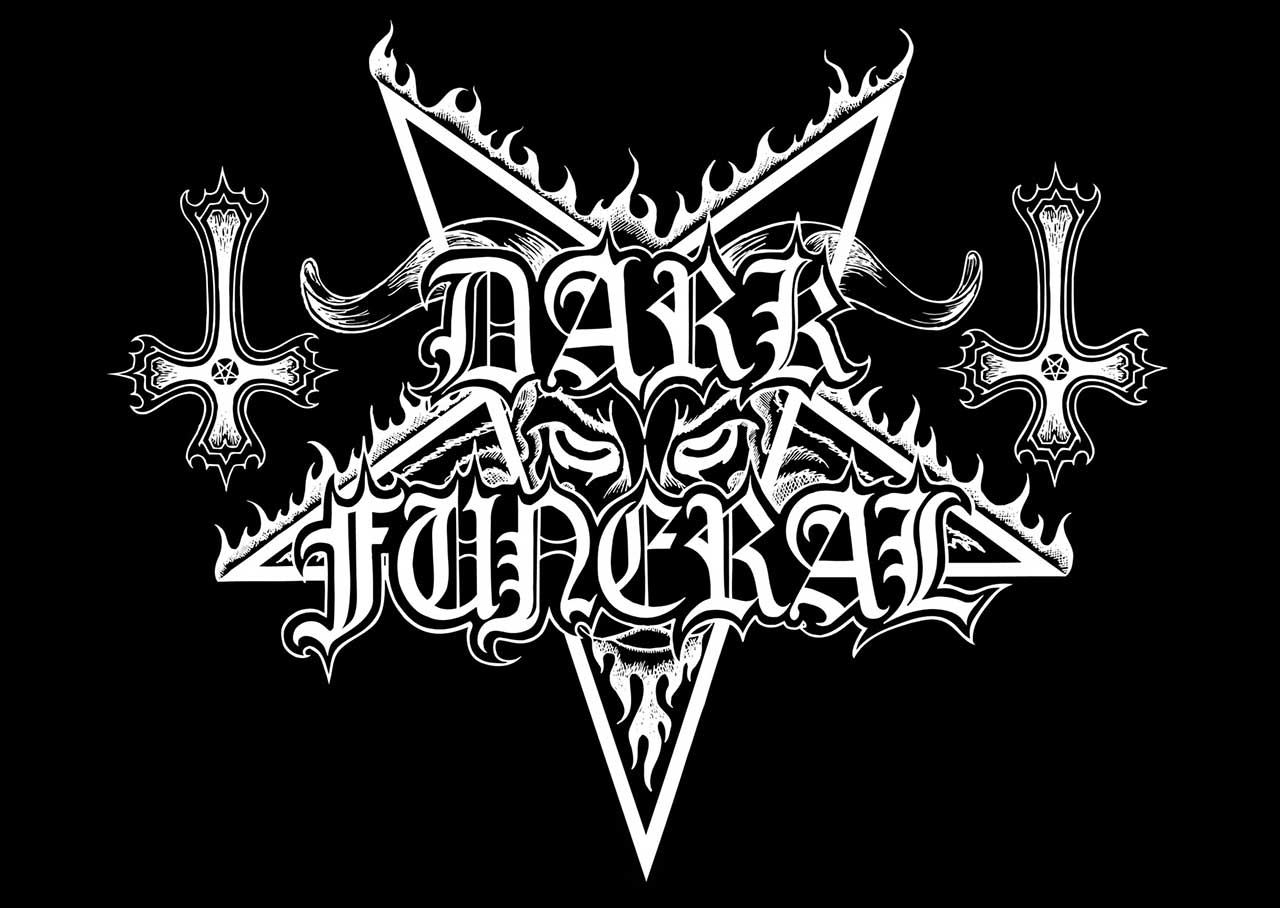
1993: Megadeth ‘Demon Vic’ shirt design
Around the era of the magnificent Countdown To Extinction album, a Megadeth shirt did the rounds featuring band mascot Vic depicted as a demon and emerging from a fiery pentagram. A great design, and perhaps all the more interesting given Mustaine’s later Christian leanings.
1994: Gorgoroth release debut album Pentagram
Another Satanic Norse black metal act, Gorgoroth’s debut album might have been called Pentagram, but curiously there were no Pentagrams on the sleeve or disc, at least until later rereleases.
1994: Cradle Of Filth release The Principle of Evil Made Flesh on Cacophonous Records
Cradle Of Filth’s first album was pretty immersed in Satanism in comparison to the vampire and horror themes of their later works. Frater Nihil of their then-label Cacophonous Records was also focussed on such themes and the result was the heavy use of his amended version of the Sigil of Baphomet on both the Cacophonous logo and the Principle sleeve. Interestingly, several later parties have stolen this version without permission, perhaps not realising it was an exclusive.
1995: Hecate Enthroned
Thinking along similar lines as Cradle Of Filth for much of their early career, the excellent Hecate Enthroned based their entire logo around the (original) Sigil of Baphomet.
1995: Krisiun release debut album Black Force Domain
One of the least subtle uses of the symbol to date, Brazilian death metal masters Krisiun devoted their first album’s cover to a huge bloody pentagram, with four inverted crosses as garnishes to the main course.
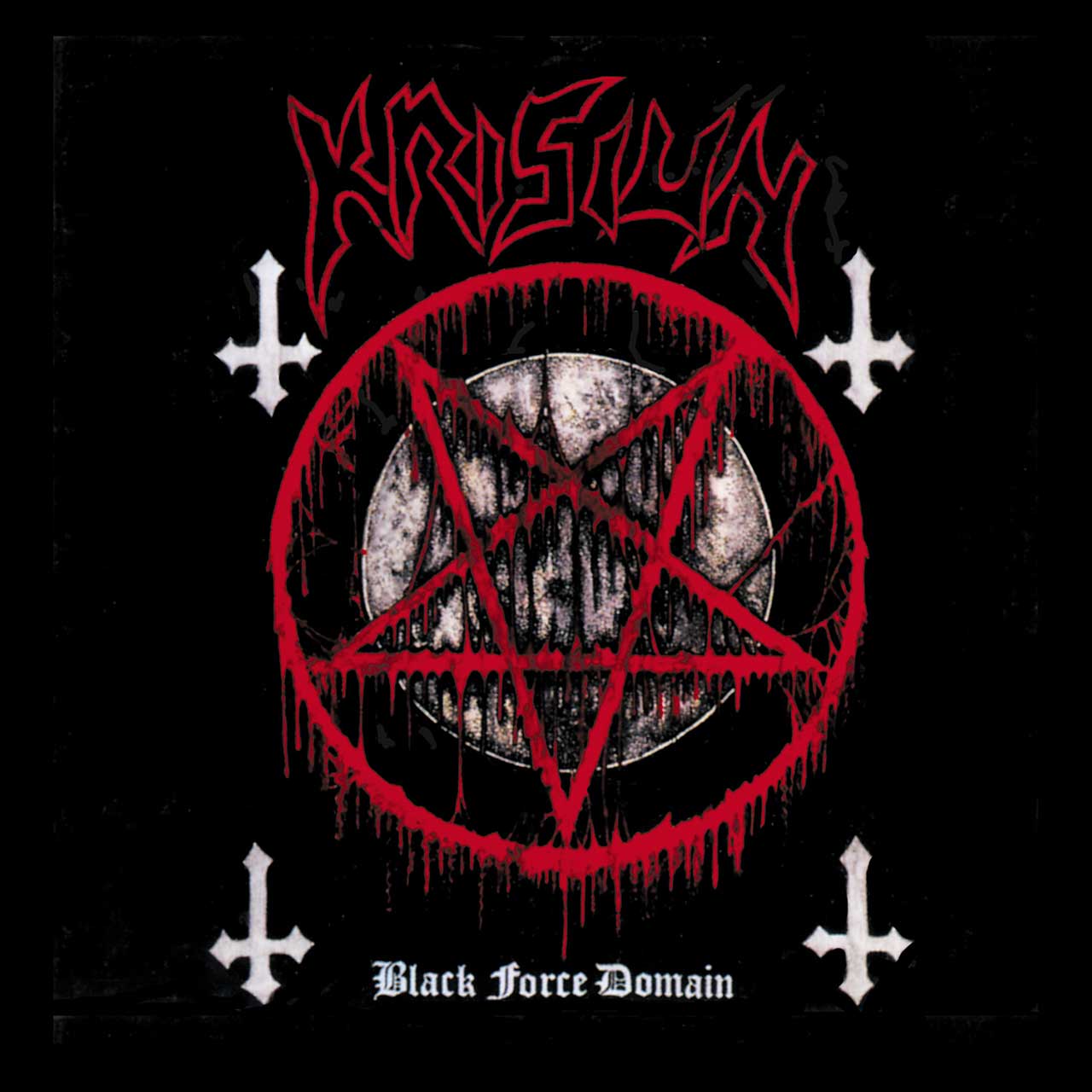
1996: Melechesh release The Siege of Lachish
A rather more ornate version of the pentagram adorns the cover to the first EP by Melechesh, who also used a pentagram and inverted cross in their logo – quite a big deal considering they came from the ultra-religious city of Jerusalem.
1996⁄1997: Bewitched release Encyclopaedia of Evil / Pentagram Prayer
Not to be confused with the nineties girl band, Swedish retro blackened thrashers Bewitched were another band who favoured the symbol in their early days, going so far as to name their second album Pentagram Prayer.

1997: Dimmu Borgir release Enthrone Darkness Triumphant, begin using the pentagram more heavily
Dimmu’s first logo hinted at a pentagram but when they changed to a cleaner design they also started including the use of increasingly complex pentagram designs. These have appeared on both records and merchandise.
2002: Anthrax release We’ve Come For You All
Anthrax’s use of the pentagram – which was not technically a pentagram, but a pentagram-like design, cleverly made up of the ‘A’ from the band’s logo – surprised a lot of fans, including Kerry King who went so far as to comment, ‘You don’t just take the pentagram up 20 years into your career’.

2003: Superjoint Ritual release A Lethal Dose Of American Hatred
Unusual in that they use weed leaf symbols rather than inverted crosses as accompaniment, Superjoint Ritual’s A Lethal Dose Of American Hatred features a pretty massive black pentagram on a suitably-alarming red background.
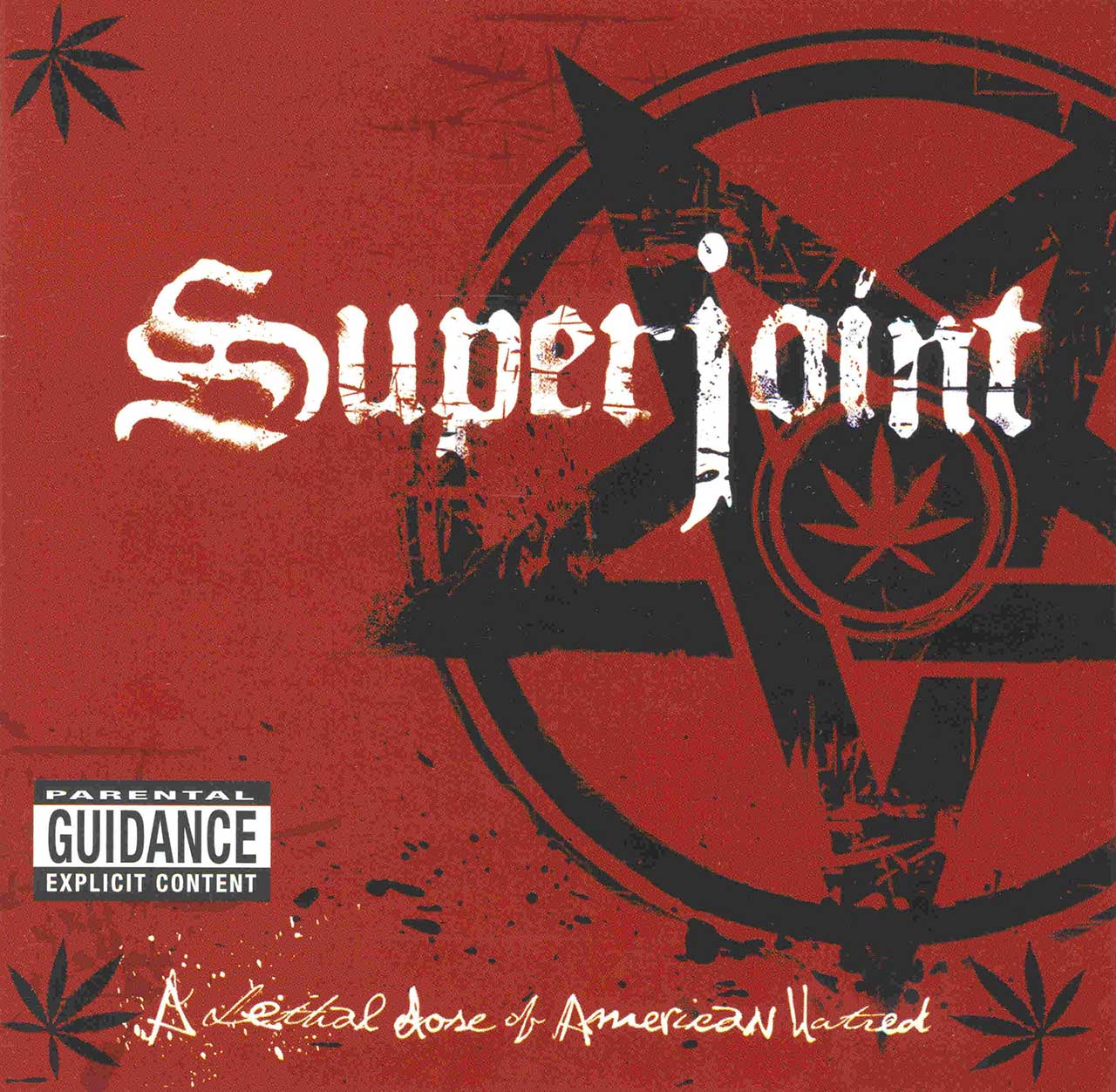
2006: Arch Enemy begin using the pentagam with their own symbol
We’re fairly sure this is the right year but Swedish melodic death metallers Arch Enemy gradually began using the pentagram in designs some way into their career, often using it on shirts and housing it within their more familiar circular symbol.
2012: Ugly Kid Joe use the pentagram on tour shirt
Perhaps even more unexpected that Anthrax was the use by tongue-in-cheek American hard rock/ heavy metal outfit Ugly Kid Joe, who featured a cloven-hooved, devilish incarnation of their mascot on a large purple pentagram on a shirt during the Stairway To Hell tour.
2012: Cancer Bats’ one-day Pentagram tour
On April 21st 2012, Cancer Bats played no less than five shows in London and formed the shape of a downward pentagram in the process – surely a fairly impressive logistical feat if nothing else.
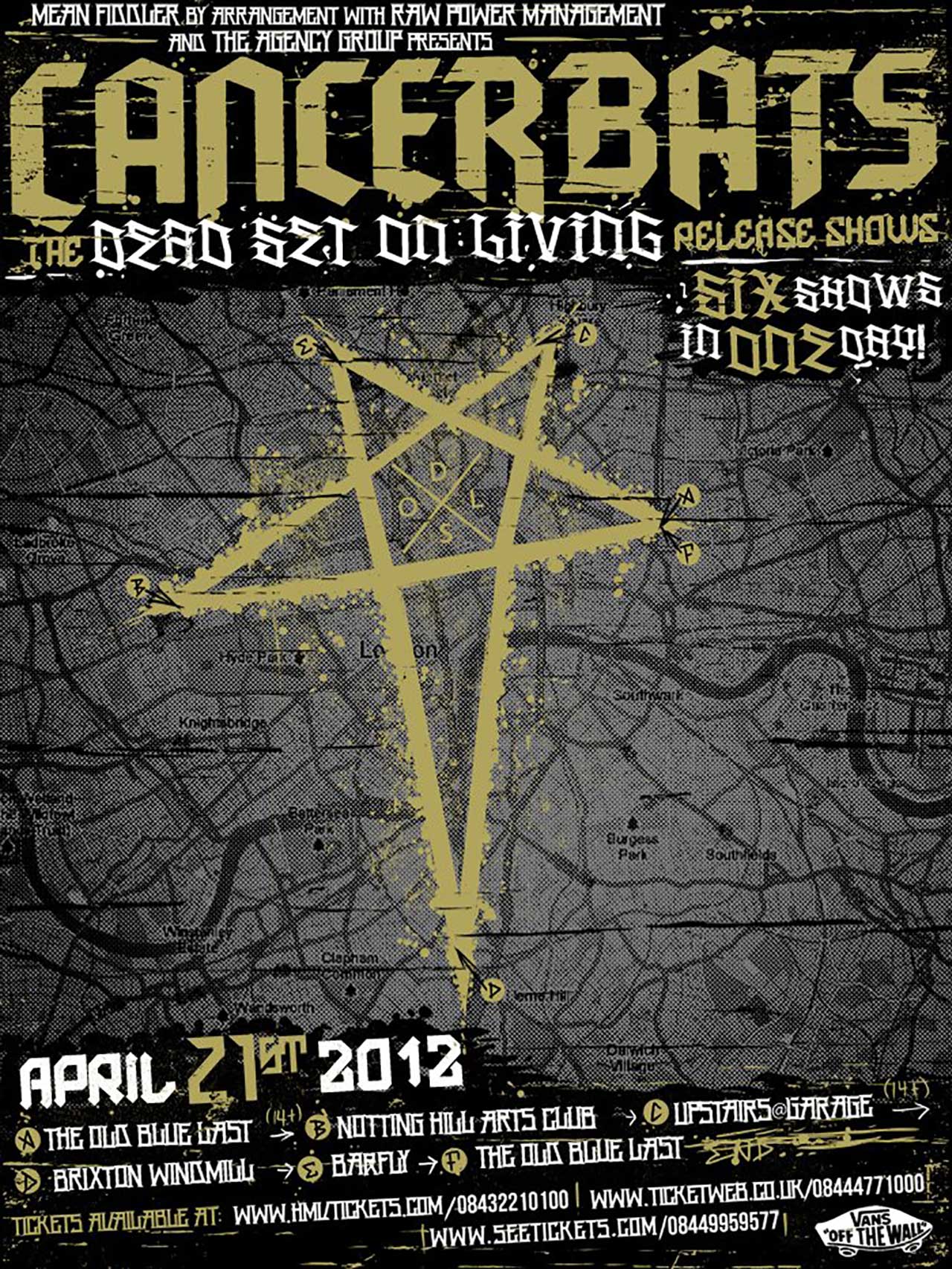
2015: Venom release From the Very Depths
Conveniently bringing everything full circle, the Newcastle veterans released a new album this year entitled From The Very Depths, its cover depicting a legion of demonic creatures emerging from… a pentagram!

